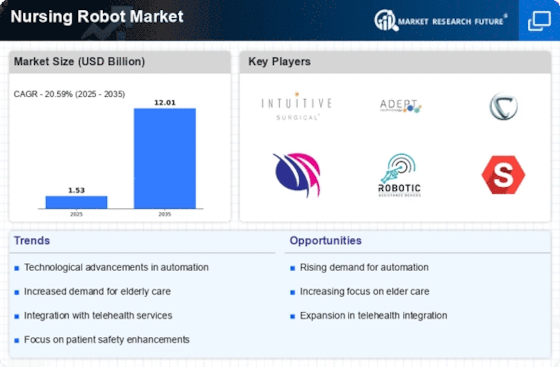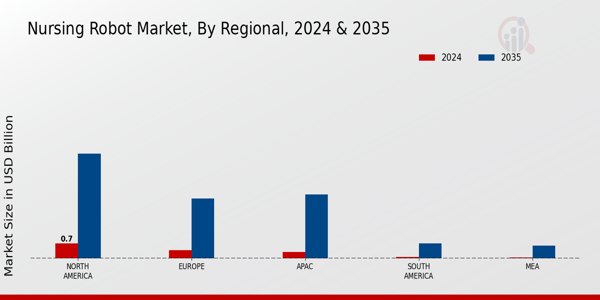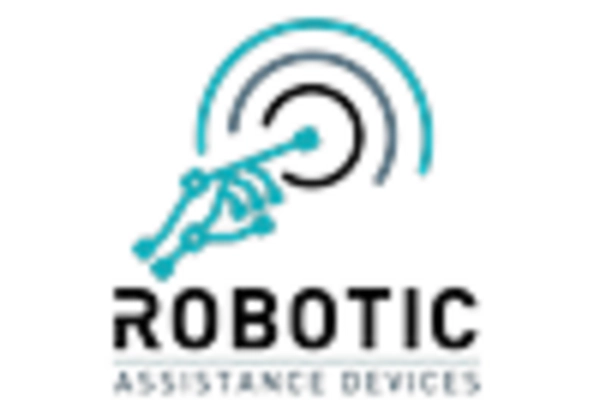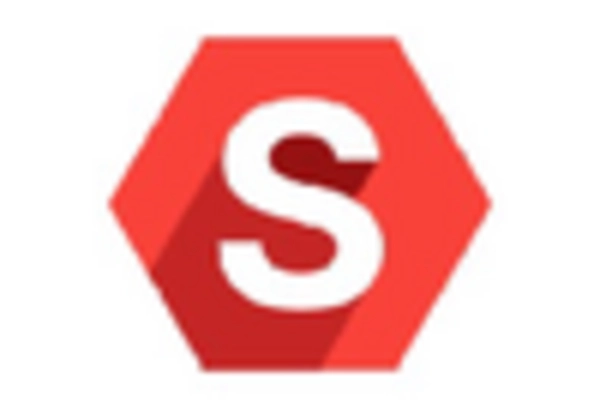Increased Focus on Patient Safety
The Nursing Robot Market is also shaped by an increased focus on patient safety and quality of care. Healthcare providers are under constant pressure to enhance patient outcomes while minimizing risks associated with human error. Nursing robots can assist in this endeavor by providing consistent and accurate care, thereby reducing the likelihood of medication errors and improving patient monitoring. The implementation of robotic systems can lead to higher standards of care, which is increasingly demanded by patients and regulatory bodies alike. As healthcare organizations strive to meet these expectations, the Nursing Robot Market is likely to see a rise in the adoption of robotic solutions that prioritize patient safety.
Cost-Effectiveness of Nursing Robots
The Nursing Robot Market is significantly influenced by the cost-effectiveness of nursing robots, which can lead to substantial savings for healthcare providers. By automating routine tasks, nursing robots can reduce labor costs and minimize the risk of human error, ultimately improving operational efficiency. A study indicates that healthcare facilities that implement nursing robots can achieve a return on investment within a few years due to decreased staffing needs and enhanced productivity. This financial incentive encourages more healthcare organizations to explore robotic solutions, thereby driving growth in the Nursing Robot Market. As cost pressures continue to mount, the adoption of nursing robots appears to be a viable strategy for many institutions.
Rising Demand for Healthcare Services
The Nursing Robot Market experiences a notable surge in demand for healthcare services, driven by an aging population and increasing prevalence of chronic diseases. As the global population ages, the need for efficient and effective healthcare solutions intensifies. This demographic shift necessitates innovative approaches to patient care, where nursing robots can play a pivotal role. According to recent data, the number of individuals aged 65 and older is projected to double by 2050, leading to a significant increase in healthcare service requirements. Consequently, the Nursing Robot Market is poised for growth as healthcare providers seek to enhance service delivery and optimize resource allocation through automation.
Technological Advancements in Robotics
Technological advancements in robotics significantly influence the Nursing Robot Market, as innovations in artificial intelligence, machine learning, and sensor technologies enhance the capabilities of nursing robots. These advancements enable robots to perform complex tasks, such as medication administration, patient monitoring, and mobility assistance, with greater precision and reliability. The integration of AI allows for improved decision-making processes, which can lead to better patient outcomes. As a result, healthcare facilities are increasingly adopting these technologies to streamline operations and reduce human error. The Nursing Robot Market is likely to benefit from these technological developments, as they create new opportunities for automation in patient care.
Growing Investment in Healthcare Robotics
The Nursing Robot Market is witnessing a growing investment in healthcare robotics, as stakeholders recognize the potential benefits of automation in patient care. Venture capital and government funding are increasingly directed towards the development of innovative robotic solutions that address the challenges faced by healthcare systems. This influx of investment supports research and development efforts, leading to the creation of more advanced and capable nursing robots. As the market expands, the competition among manufacturers intensifies, resulting in improved product offerings and lower costs for healthcare providers. Consequently, the Nursing Robot Market is expected to flourish as investment continues to drive innovation and adoption.


















Leave a Comment